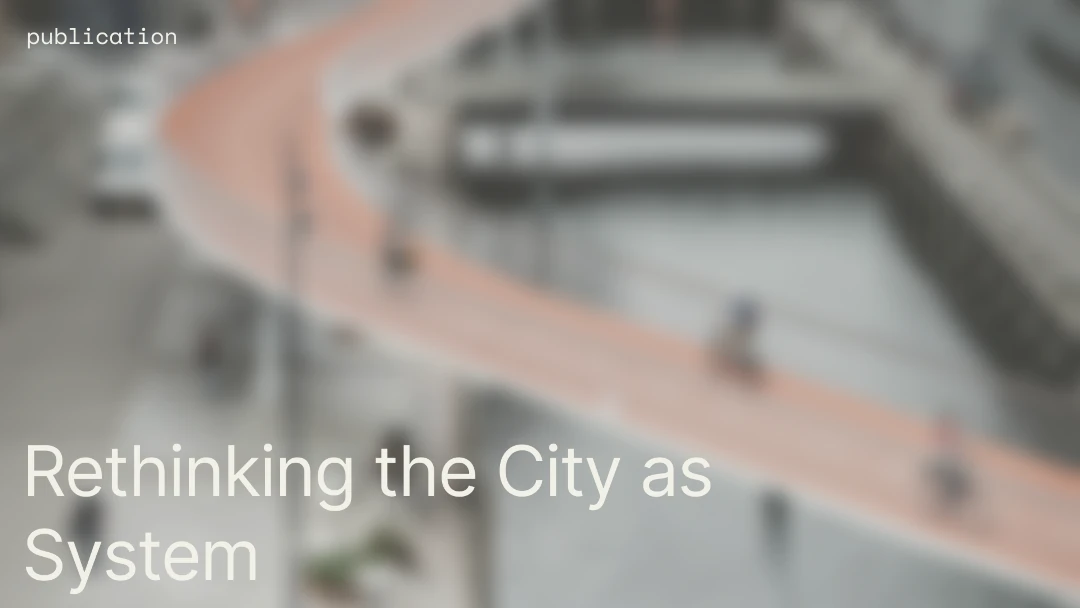
At revalu, we focus on making material data usable—connecting architects, engineers and contractors with the tools they need to evaluate environmental impact early and often. While the industry is accelerating toward emissions targets and circular goals, cities themselves remain constrained by static planning models and disconnected datasets.
FutureCities—City Futures, published by TU Delft Open, addresses this disconnect. It gathers perspectives from 37 contributors exploring how cities can evolve without defaulting to outdated design frameworks. Instead of speculating on distant futures, the book focuses on usable models: ways to integrate lifecycle data, carbon risk, and spatial performance into daily decision-making.
Among the 25 chapters, several stand out for their relevance to the AEC sector and material professionals—especially those working with EPDs, retrofit assessments, or scenario-based planning. These chapters shift the focus from form to function: using data and modelling to drive outcomes that are environmental, financial and social.
FutureCities—City Futures is available open access via TU Delft Open Publishing: read the full publication here.
In UrbanDecarbonisation: Destranding Cities for a Post-fossil Future, Paolo Cresci, Francesca Galeazzi, and Aurel von Richthofen (Arup) introduce the concept of “carbon stranding”—a scenario in which buildings become financially non-viable due to tightening carbon regulations.
Arup’s CRISP (Carbon Risk Impact Screening of Portfolios) tool maps emissions exposure against climate targets at asset level. It allows owners, planners, and municipalities to assess when a property or project will exceed allowable emissions—and calculate the operational or retrofit interventions required to avoid stranding. For those working with EPDs, lifecycle models, or ESG reporting, CRISP demonstrates how emissions data can support long-term decision-making at both building and portfolio scale.
Wolf Mangelsdorf (Buro Happold), in Wechselwirkungen:Rethinking Urban Planning and Densification, challenges form-led planning in favour of parameter-led design. The chapter introduces a systems modelling framework that connects urban variables—density, mobility, health, affordability—not as isolated metrics but as dynamic inputs into urban performance.
This approach allows decision-makers to test multiple scenarios for densification early in the process. Instead of design driving outcomes, outcomes define spatial choices. For urban professionals facing trade-offs between housing provision, green space, and infrastructure constraints, this framework supports more transparent negotiation across disciplines.
CircularFutures: Predictive Planning for Transformative Spaces by Marvin Bratke and Urban Beta proposes a shift from building as fixed asset to system as service. Modular and reversible design strategies—developed through participatory digital workflows—enable buildings to evolve over time, rather than lock in form from day one.
The chapter explores how circular material use, co-creation platforms, and adaptive architecture can meet changing user needs while preserving embedded carbon. These strategies support not only flexible typologies but also greater retention of material and social value over time—especially relevant in urban environments where user requirements shift more quickly than buildings can.
In Balancingthe Carbon Budget, the team from 3XN/GXN (Kåre Stokholm Poulsgaard, Ann-Britt Vejlgaard, and Lasse Lind) bring the planetary carbon budget into everyday design practice. Rather than treating carbon as a performance metric post-design, the chapter reframes it as a constraint to be worked within from concept stage.
Through iterative design loops, the authors show how structure, façade, and material decisions can be evaluated against an emissions budget. This carbon-first design process supports compliance with upcoming regulation but also encourages low-carbon decision-making long before project lock-in. The method aligns closely with digital twins, whole-life carbon tools, and EPD-led workflows increasingly used across the sector.
As more cities adopt emissions targets and circular goals, the gap is no longer technical—it's procedural. Planning frameworks, budgeting tools, and design systems must evolve to integrate environmental data where it can do the most: in early, everyday decisions.
What FutureCities—City Futures shows is that adaptive tools already exist. Whether it’s scenario-based densification, lifecycle carbon budgeting, or modular reuse, the shift is not about building more—but about building with clearer intent.
This is exactly where revalu fits in. By making EPDs searchable, comparable, and workflow-ready, we help material data move from static documents into design, specification, and strategy. We’re here to support that transition—from performance as a promise to performance as a deliverable.
→ Explore how revalu can support your projects with actionable material data. Visit platform.revalu.io
.png)




























